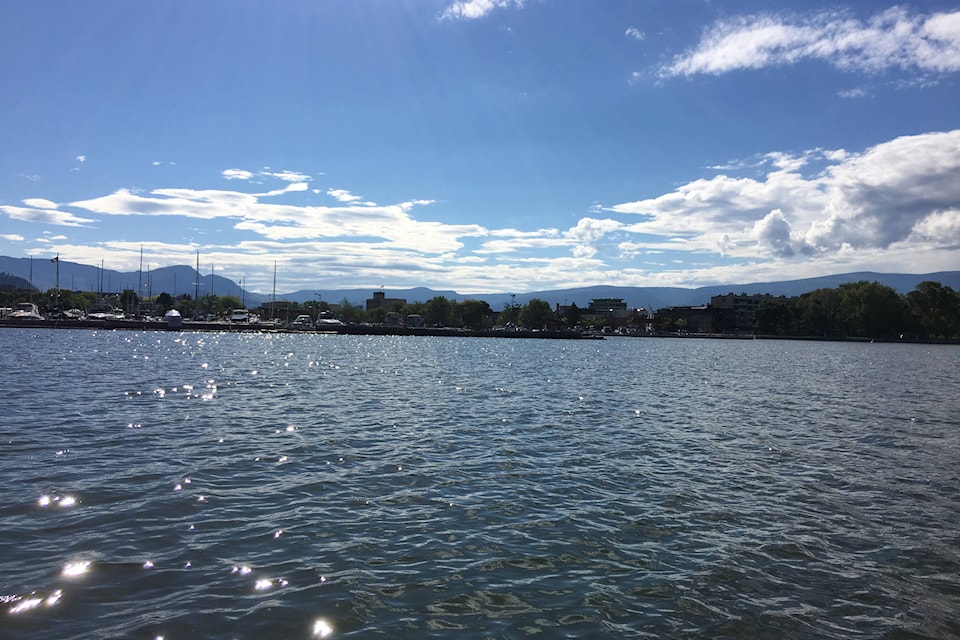Even though Okanagan Lake’s water levels are receding, the flood risk remains.
Okanagan Lake is now receding after peaking at 342.69 metres, which is 57 centimetres lower than last year’s high water mark. However, lake levels are still above full pool and the lakeshore remains vulnerable to flooding or erosion in the event of high winds or major rain, according to Central Okanagan Emergency Operations release.
As of this morning, Okanagan Lake is at 342.66 m and flood protection measures need to stay in place until it drops another 18 cm to the full pool level of 342.48 m. Full pool is a target set by the province to try and ensure an adequate water supply through the summer, the release said.
“The situation is looking good, especially compared to last year. But we have to hold on just a little bit longer before it is safe to take away the log booms and other protection measures,” said centre director Joe Creron. “While it’s impossible to know for sure how long it will take, we are hopeful that the lake will reach seasonally normal levels within two weeks.”
Log booms have been installed near Swim Bay in Peachland, Hot Sands Beach in Kelowna’s City Park, and at Maude-Roxby Bird Sanctuary in Kelowna. Measures, such as sandbags, have been installed in other key locations around Okanagan Lake. Lake levels are monitored daily and plans are in place to remove the log booms and other measures placed by the Emergency Operations Centre as soon as the flood risk has passed, the release said.
People living near the waterfront are urged to keep protection measures installed on their property in place until the centre has announced that the flood risk has passed.
The situation around the Central Okanagan’s creeks and streams has now stabilized and flood protection measures have mostly been removed from these areas. Residents who live away from the lakeshore can dismantle protection measures installed on their property.
Sandbags should be returned to active sandbag sites or designated drop-off locations, with the sand still in the bags. These sites and locations are indicated on the map at www.cordemergency.ca.
Residents dealing with sandbags on private property should take precautions when working around stagnant water as sandbags that have been sitting in water can contain mould. Residents should wear N95 respirators, nitrile gloves and rubber boots and thoroughly wash hands and clothes after handling the bags.
Under no circumstances should sandbags be emptied into creeks, lakes, wetland, beaches or other watercourses as outlined in the Water Sustainability Act. The impact can destroy fish habitat and affect drinking water supply, infrastructure, flood control, navigation and recreational activities. It is also illegal.
Residents and visitors are also asked to leave debris washed up on beaches in place. Logs and other wood help limit erosion caused by wave action. Crews are ready to remove the debris from our beaches as soon as the erosion risk has passed, the release said.
States of Local Emergency remain in effect for Kelowna, West Kelowna, Peachland, Westbank First Nation, and the Regional District of Central Okanagan. The State of Local Emergency for Lake Country expired June 5.
For more information, visit www.cordemergency.ca, sign up for e-updates, or call the information line at 250-469-8490.
